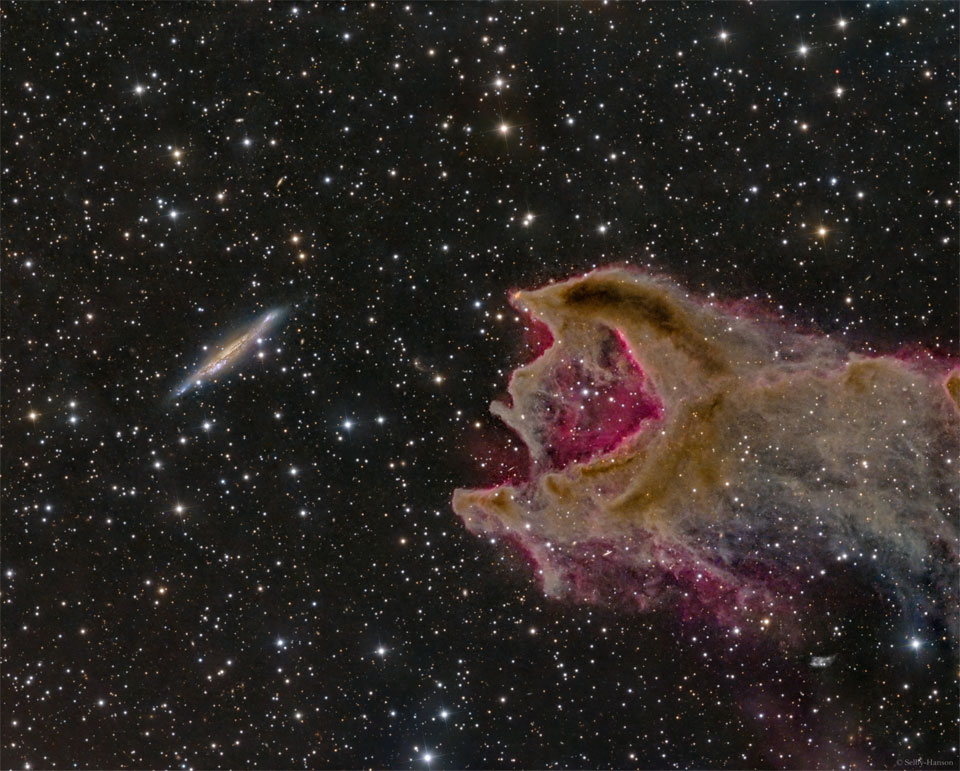Please! The link, the
featured photo, took us to a Facebook page, and since I don't have Facebook, I was unable to find any information at all about the image. Surely the links to information about the APOD in question should go to pages that are open to all?
So all I can do is compare the APOD with an image where I do have technical information:
Let's start with Terry Robison's image, for which I have exposure details:
Red 28 X 600 seconds
Green 27 X 600 seconds
Blue 32 X 600 seconds
Lum 66 X 900 seconds
Total Exposure: 31.0 hours
So Terry Robison took 28 exposures, each one lasting 600 seconds, through a red filter. He took four more exposures, 32, through a blue filter, and one less, 27, through a green filter. See a larger version of Robison's image
here.
One thing that is immediately obvious about Terry Robison's image is that the cometary globule does not look red at all. This tells us two things. The red light in the globule is all ionized hydrogen, Hα, and when you don't use an Hα filter, which Robison didn't, the Hα is so faint that it barely shows up at all.
But the Hα is real all right, just faint. Note that the red light in the APOD is strongest in the "maw" of the globule, as if the ionized light mostly comes from inside. But there are no obvious signs of any star formation in CG4. The red light must originate from hydrogen in the globule being ionized by ultraviolet light entirely from the outside.
Where is the ionizing ultraviolet light coming from? I was unable to find an image showing you both the source of ionization and the (more or less) exact position of the globule, but the image below will give you an idea:
Vela supernova remnant and bright star Gamma Velorum.
Image: Robert Gendler & Roberto Colombari.
In the image, I have marked both the position of the Vela supernova remnant and bright star Gamma Velorum, which is in fact an extremely hot and harshly ultraviolet star. I have also marked, near the right edge of the image, a group of four stars. The brightest of these is itself a hot ultraviolet star.
If you were to move off the right edge frame of the picture, for a distance slightly less than the distance between Gamma Velorum and the group of four stars, you would come to the position of cometary globule CG4.
In other words, this globule is probably affected by ultraviolet light from the Vela supernova remnant as well as from Gamma Velorum.
Ann
 CG4: The Globule and the Galaxy
CG4: The Globule and the Galaxy

